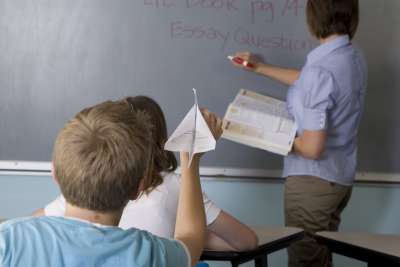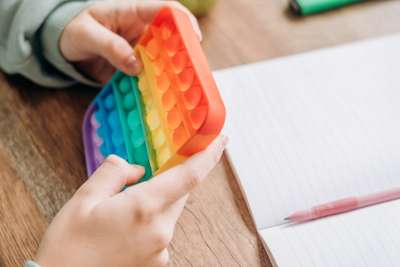Marlee Chizhevsky is a Special Education teacher, case manager, and curriculum writer in Chicago, Illinois, with a focus on social-emotional learning, neuroeducation, and brain-based learning research.
Here she shares classroom management strategies for building positive relationships with students who may be at risk or struggling with their mental health.

Positive teacher-student relationships are fundamental to student success at school. Building better relationships leads to increased student engagement and fewer behavioral issues, and improves academic achievement. All teachers want to be that “safe” adult for their students - the one that students trust, that they respond to, and that they learn from. However, building strong relationships with students is not always so straightforward, particularly with students who are struggling with issues including mental health.
Building Relationships With Struggling Students
Although few classroom teachers are trained in the area of mental health, Kappan estimates that on average, 49% of students struggle with some type of mental health issue that could impede their ability to stay regulated in stressful situations, perceive people’s actions correctly, and cope with everyday interactions. As such, teachers often misinterpret a struggling or at-risk student as being oppositional, disrespectful, or non-participatory, when in reality they are struggling with deeper mental health issues. Most teachers are directed to “build relationships” with struggling students, but this is a very vague directive. We need specific strategies to interact and relate to struggling students.
Strategies for Positive Teacher-Student Relationships
Implementing strategies that consider the needs of struggling students can positively impact the well-being of all students and support healthy relationships in the classroom environment. The key to strong teacher-student relationships is finding ways to foster positive interaction in the learning environment, and this is most effective when embedded into school culture. This might include learning students’ interests, or simply understanding that some learners may respond differently to everyday actions like offering praise or giving instruction. Read on for three simple yet effective strategies for any classroom.
1. Giving Praise
Praising students is often second nature to teachers. We see a student do something awesome and we want to point it out to the rest of the class. While the intentions behind public praise are good, students with social anxiety or low self-esteem are often extremely uncomfortable with public praise. Instead, giving these students a non-verbal thumbs up, a positive sticky note, or some other discrete signal, are better ways to provide praise in a way that doesn’t make them uncomfortable. It might also help to ask the student, in private, how they prefer for you to express when you’re proud of them. Kappan also suggests that the nature of the praise also makes a difference, as perfectionist students, students with depression, anxiety, or low self-esteem, will often dismiss praise that they don’t agree with; therefore, such students are more likely to accept and believe praise that is factual in nature, such as, “You showed your work on ten problems today!!” over general praise like, “You’re awesome at math.”
2. How You Say It
This is true for every student but particularly for students that tend to be oppositional or defiant: It’s not always what you say but how you say it. This is especially important to keep in mind when giving directions. Using authoritative language, such as, “Quiet down!” to manage the classroom will almost certainly ignite a power struggle with oppositional students. Try to provide reasoning before giving a demand, so that students understand why before the impulse to disagree kicks in. For example, you might say, “I want everyone to understand how to complete the next part of the project, so please quiet down so I can explain and answer any questions.” Providing time and space to follow a direction can also be helpful. If you need to give a directive to an individual student, sometimes doing so in a subtle nonverbal gesture, or via sticky note will be more effective than calling them out publicly.
3. Offering Choices
Giving children choices not only affirms their autonomy but also helps with de-escalation and making a student feel respected. Instead of giving ultimatums, such as, “Stay in your seat or I will be making a phone call home.”, it is more effective to explain the expectations and limits at the end of the conversation, after they have had time to calm down. For instance, saying, “It’s okay to get frustrated with your work, but it’s not okay to rip up your paper. You can either take a water break and come back in five minutes, or go sit in the calm-down corner for five minutes, and I will check in on you. Use the timer if you need it.”, still emphasizes the expectations and boundaries, while also giving your students a sense of autonomy.
It’s important to remember that student behavior communicates feelings; so oftentimes, your toughest students are acting out because they need something that they’re not getting. Relating to them and meeting them where they are can make all of the difference.





